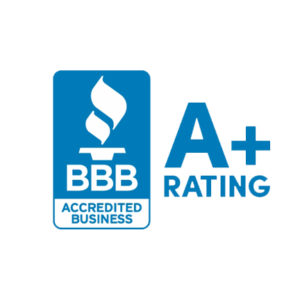That little stain on your ceiling or the one shingle you saw in the yard might seem like no big deal. It’s tempting to think you’ll get to it later. You put it on your to-do list, hoping to save a little money month to month.
But the true cost of delaying roof repairs often adds up to much more than you expect. This delay can turn a simple fix into a homeowner’s worst nightmare. In fact, you have to think beyond the immediate repair cost and see the full picture of what neglecting roof issues can do.
What you’ll find is that waiting hits your home and your wallet hard. The small roof issues aren’t going away. They’re just getting worse. A proactive approach is the best way to save money and avoid major problems.
What Happens When You Ignore Small Roof Problems?
It’s easy to underestimate a tiny roofing issue. But your roof is a complete system that protects your entire home. One weak spot can compromise the whole thing, creating a domino effect you don’t want to experience.
Water Damage
A missing or damaged shingle is like leaving a window open during a rainstorm. It allows water to find its way inside your home. This quiet intruder starts causing hidden damage you can’t see at first, compromising your home’s structural integrity.
Before you know it, you have stained ceilings and peeling paint. The wood in your attic and walls can warp and soften from the constant moisture. This weakens your home’s structure and can lead to dangerous mold growth.
According to the Environmental Protection Agency, mold can trigger allergies and other respiratory issues. Fixing a water-damaged and mold-infested attic is a massive and expensive project. The cost of repairs will far exceed that of the initial small fix.
Pests in Your Attic
Did you know that a small hole in your roof is an open invitation for pests? Squirrels, raccoons, birds, and insects look for safe places to build nests. Your attic is the perfect spot for them to settle in.
Once inside, these critters can cause significant roof damage. They can chew through electrical wires, creating a serious fire hazard. They also destroy insulation, hurting your home’s energy efficiency and leading to higher heating and cooling bills.
Getting rid of a pest infestation involves more than just setting traps. It means hiring professionals for removal and sanitization. These are hidden costs you can avoid with a timely roofing repair.
Your Wallet Feels the Chill (and the Heat)
Your roof plays a big role in your home’s insulation. Gaps and cracks from an aging roof or storm damage let conditioned air escape. This puts a huge strain on your heating and cooling systems.
During the winter, heat rises and slips right through damaged areas of your roof. In the summer, the sun heats your attic, and your HVAC system may have to run constantly to keep up.
This means your energy bills get higher every month. You’re literally paying for the air escaping through your roof. Fixing those roof leaks helps keep your home comfortable and your utility costs down.
The Financial Cost of Delaying Roof Repairs
Putting off a repair might feel like a smart financial move in the short term. You’re avoiding a bill today. But that bill doesn’t just disappear. It grows much larger over time as costs rise.
When a Small Fix Becomes a Full Replacement
Let’s talk about real numbers and why you shouldn’t be delaying roof replacement. Repairing a few cracked asphalt shingles or applying roof coatings to seal a minor leak might cost a few hundred dollars. It’s a manageable expense for most homeowners.
But if you let that leak continue, water damage can rot the decking underneath. What could have been a simple patch job now becomes a partial or even a full roof replacement. While a small repair might be under $1,000, a new roof installation can easily cost between $8,000 and $30,000 or more, not including rising labor costs.
That is a huge price jump. If a large project is unavoidable, many roofing contractors offer financing options to help manage the expense. Paying a little now can save you from a massive bill later.
Will Your Home Insurance Help You?
Many homeowners think their insurance will cover any major roof problem. This is a common and costly mistake. Insurance is there for sudden, unexpected events such as wind damage or hail damage.
It’s not there to cover problems caused by neglect. If an adjuster sees that your roof failed because of long-term leaks from aging materials you never fixed, your claim will likely be denied. You’ll be left to pay for everything yourself.
Emergency Repairs Come at a Premium Price
A roof doesn’t fail on a convenient schedule. It often gives out during severe weather. This puts you in a tough spot. An emergency with your residential roofing or commercial roof requires immediate attention.
You’ll need to call a certified roofing contractor for an emergency visit. These services always cost more than a planned appointment. You pay a premium for their immediate help, often on a weekend or holiday.
Being Proactive Saves You Money and Stress
Viewing roof maintenance as an expense is the wrong way to think about it. It’s an investment in your home’s health and value. A well-kept roof protects your biggest asset and improves its curb appeal.
By catching problems early, you extend the life of your current roof. This lets you put off the big expense of a full replacement for as long as possible. A reliable roofing contractor can offer different roofing solutions to fit your needs.
Plus, a healthy roof keeps your home’s property value high. Potential buyers are often scared away by homes that need a new roof. Keeping yours in top shape makes your house more attractive if you ever decide to sell.
Simple Steps To Stay Ahead of Roof Problems
You don’t have to be a roofing expert to protect your home. A few simple, proactive habits can make all the difference. These steps can help you catch issues before they get out of control.
- Get regular inspections: Have a professional perform a roof inspection at least once a year. They can spot hidden issues you would miss from the ground. An inspection after a major storm is also a good idea.
- Keep it clean: Debris such as leaves and sticks can trap moisture against your roofing materials. This moisture will slowly break down your shingles. Make sure your gutters and roof surface are clear.
- Act on warning signs: If your roof starts showing signs of wear, don’t just ignore them. If you notice water stains on your ceiling, missing shingles, or curling edges, don’t wait. Address these signs right away.
- Budget for maintenance: Just like you budget for other bills, set aside some money for home maintenance. This way, you’re not caught by surprise when a repair is needed.
Here is a quick guide to common warning signs:
| Warning Sign | Potential Problem | Next Step |
|---|---|---|
| Water stains on ceilings or walls. | An active roof leak. | Call a roofing contractor immediately. |
| Missing, cracked, or curling shingles. | Aging shingles or wind damage. | Schedule a roof inspection. |
| Granules from shingles in gutters. | Shingles are at the end of their lifespan. | Budget for future replacement. |
| Sagging roof deck. | Moisture has weakened the structure. | This is an emergency; get a professional opinion now. |
Our Conclusion
The temptation to push back roof work is understandable. We all have budgets to manage and other priorities. But waiting is a gamble where the odds aren’t in your favor, as the repairs add up.
Small problems rarely fix themselves. They only grow. The real cost of delaying roof repairs shows up in water damage, pests, high energy bills, and eventual structural failure. Acting quickly not only protects your home but also protects your finances from much bigger problems down the road.
















